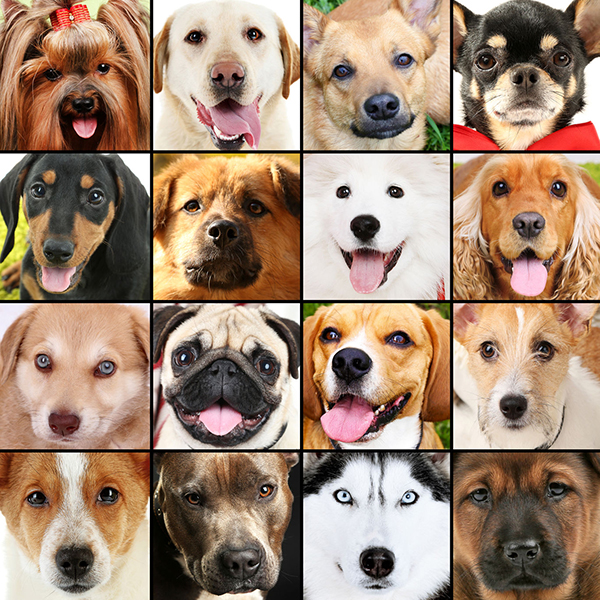Some dog breeds consistently display a single color scheme in their coats. If you adore the spunk of a West Highland terrier, it is a sure bet that no matter which puppy you choose, it will be a white dog. Some dog breeds, however, are available with coats that span a wide variety of color and pattern choices.
Dog Coat Colors
Solid colored dogs, such as the black Labrador retriever, are those that exhibit only one color throughout their coat. Some examples of solid dog fur colors include the following:
- Black, as seen on the Newfoundland and the Scottish terrier
- White, as seen on the Samoyed and the Bichon frise
- Red, as seen on the Irish setter
- Brown, as seen on the chocolate Labrador retriever
Other solid hues include blue, cream, apricot, fawn and orange. Many dog breeds, such as the Poodle, are available in a wide array of solid color options.
A bicolored dog indicates one with a coat that displays two different colors, one of which is usually white. The two colors present similarly in every dog of a specific breed. Boston terriers, for example, go formal in coats of black and white, and this bicolored combination is appropriately known as the tuxedo. Black and rust is a dual color combination that does not include white, such as in a coat sported by the Rottweiler. The Rottweiler’s coat is predominantly black with markings of rust on the eyebrows, legs, muzzle, throat and the underside of the tail. A bicolored presentation such as this is known as the phantom.
A tricolored dog, such as the beagle, the Bernese mountain dog or the Basset hound, presents three colors, such as white, black and tan. Some breeds, such as the Pomeranian, are available in solid, bicolor or tricolor coats, and they are also available in a variety of patterns.

Dog Coat Patterns
Dogs can have two or more colors that join together on their coats to form patterns.
- The popular brindle pattern appears as thin stripes of black on a lighter background color, such as red or fawn. Brindle coats are often seen on American Staffordshire terriers and Greyhounds.
- The merle pattern presents as spots and streaks of black on a blue background. The blue hue is a dilution of black. Merle coats may be seen on Collies and Australian shepherds.
- Dapple coats look like watercolor paintings of mottled patches in multiple colors. The dapple pattern can be seen on some Dachshunds.
- Blenheim is the term used to describe the bicolor pattern of red and white that is often seen on the Cavalier King Charles spaniel.
- Harlequin is the pattern that is characterized by large black or blue splotches on a white background, as is seen on some Great Danes.
- Ticked coats are white with spots and flecks of another color. This may be seen on the English springer spaniel.
- The roan pattern presents as a predominance of streaking or spotting on a background of white, which actually leaves the white barely noticeable. The roan pattern is commonly seen on Australian cattle dogs.
- The sable pattern occurs when each individual hair is light in color and tipped with black at the ends. Dogs with the sable pattern often have black masks, and a popular example of a breed with a sable coat is the German shepherd.
- Piebald indicates a pattern in which the coat is predominantly white with a few patches of color. Some breeds that may present with piebald patterns on their coats include greyhounds, dachshunds and pointers.
- Parti is used to describe a pattern in which the coat exhibits two or more solid colors, one of which is white. The margins of each colored area are clearly distinct. Several breeds are available with the parti coat, including Pomeranians and Cocker spaniels.
Choosing your favorite breed may be easy once you compare sizes, grooming needs, temperaments, health issues and coat types. Depending on which breed you favor, the selection of a dog fur color or dog coat pattern may present you and your family with a fun challenge.

